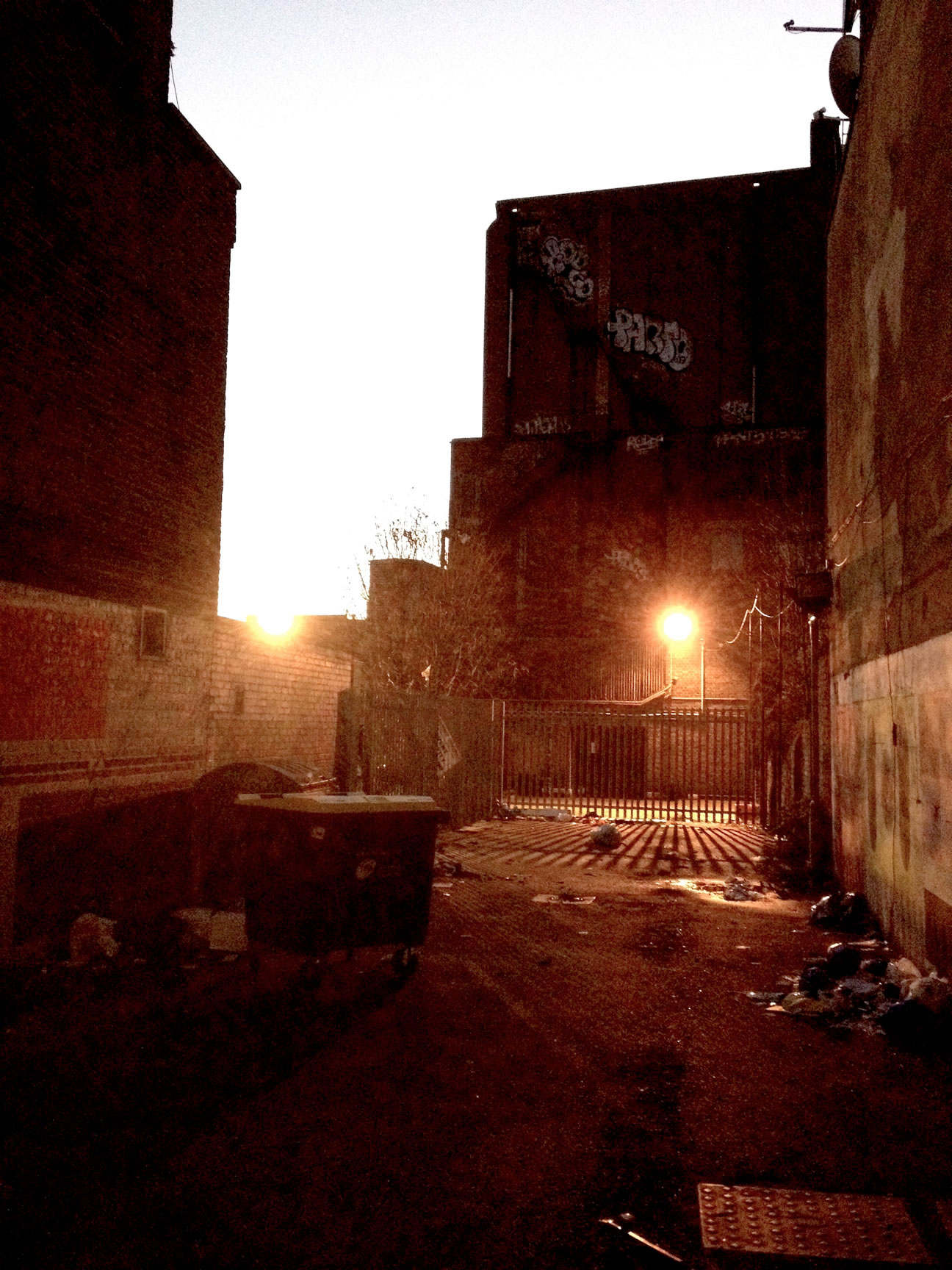
‘Willesden Salvage’, a sign says. That sounds hopeful. Then: ‘We have moved’. November, fog comes down, thick as the smoke above ‘London’s Overthrow’. You realize how little you know the cityscape you love: as the mist evanesces, you don’t know what will emerge, if those towers you can suddenly see were there before, or if London grows by congealing smoke.
There is building, just endlessly not of public housing. The city’s showcase architecture is elemental. The 30 St Mary Axe building – the Gherkin – less than a decade old, is established in the skyline. The spine of the Shard soars above london accumulating glass as if it’s in solution, growing crystals. Number 20 Fenchurch Street — the Walkie Talkie — rises by now above-ground. It’s too early to be sure how such leviathan construction will submit to the city.

Some will be ugly. That might not be the worst sin: London can metabolise. Centre Point, stubby tower at the junction of Oxford Street and Tottenham Court Road, is ugly, and, if grudgingly, rather loved. But London's growing fake public spaces abjure the backstreet-and-alleyway gestalt of the city. It and its planners have little room for any urban contingency where railway bridges cut low over streets, on their own business, at angles that make no sense from below, forming strange obliques and acutes with the houses they meet.

The question is whether these new glass boxes of large size can, over time, submit, surrender, become part of the city. This is something that Canary Wharf, the Docklands financial district begun in the late ‘80s, every day a thuggish and hideous middle-finger flipped glass-and-steel at the poor of the East End, every night a Moloch’s urinal dripping sallow light down on the Isle of Dogs, has never done and will never do.
 Single page view
Single page view